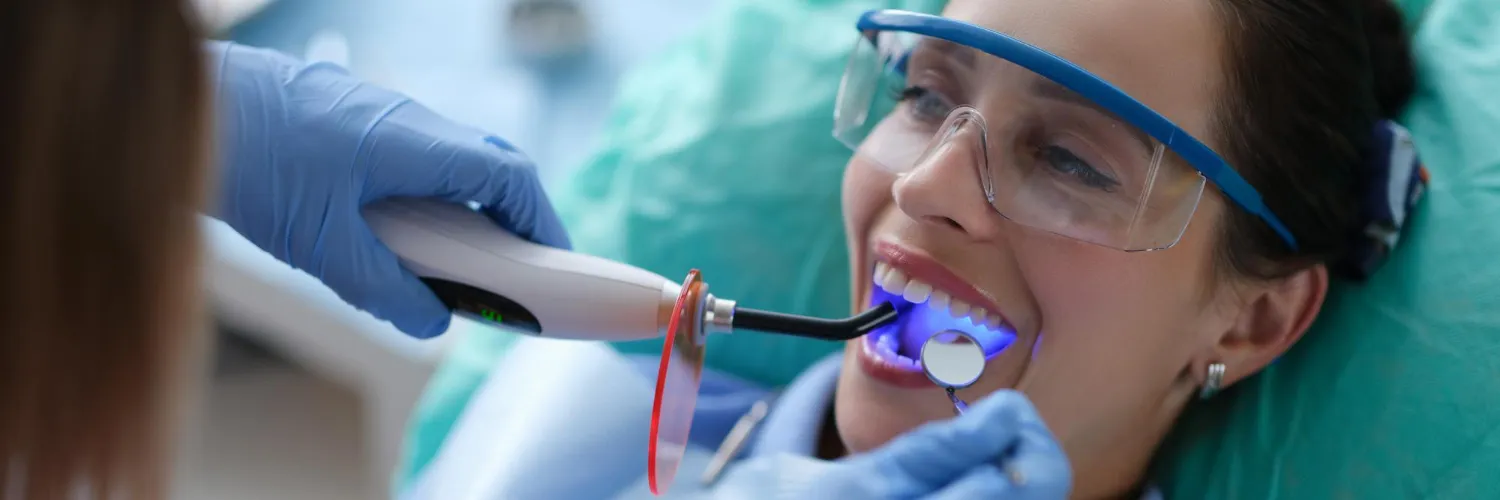What is teeth whitening?
Teeth whitening in a dental clinic is a professional procedure carried out by a licensed dentist and uses techniques and products that can offer faster and more effective results compared to at-home whitening treatments. Teeth whitening in the clinic is also safer and more controlled, reducing the risk of damage to the teeth or gums.

Types of Teeth Whitening in the Clinic
Laser Whitening: This is one of the most advanced and fastest treatments. Lasers are used to activate whitening agents (such as hydrogen peroxide) to trigger a chemical reaction that removes stains and whitens teeth. This process is quick and typically provides visible results after one session.
Light-Activated Whitening: This is a process where a special light is applied to the teeth after the whitening agents are applied. The light activates the ingredient and helps accelerate the whitening process, making the teeth appear whiter very quickly.
- Whitening with Gel and Tray: This treatment may require several sessions and is usually used for patients with deeper stains. The whitening gel is applied to the teeth, and custom trays are often used to ensure that the whitening substance stays in close contact with the teeth for longer periods.
Teeth Whitening Procedure in the Clinic
Before starting any treatment, dentists usually perform an assessment of the health of the teeth and gums. They may perform a thorough cleaning to ensure that there is no plaque or tartar that could affect the whitening results. If there are other issues (such as cavities or infections), these may need to be treated before proceeding with whitening.
After the teeth are cleaned, dentists protect the gums with a special material that shields them from the effects of the whitening substances. This is crucial to prevent irritation or sensitivity of the gums.
The agents used for teeth whitening typically contain active ingredients like hydrogen peroxide or carbamide peroxide. This ingredient is capable of penetrating the outer and middle layers of the teeth to break down stains and whiten the teeth.
After the whitening substance is applied, some clinics use technologies such as special lights or lasers to activate the whitening agent and speed up the process. This helps the substance penetrate deeper into the tooth and provides faster and more effective results.
Laser or special light whitening may last around 30 minutes to 1 hour, while the more traditional gel whitening method may require several applications during the procedure.
After the treatment is completed, dentists will assess the color of the teeth and may apply a protective layer to ensure their safety after the procedure. You may be satisfied with the results after one session, but for some patients, it may be necessary to repeat the treatment to achieve the desired shade.
